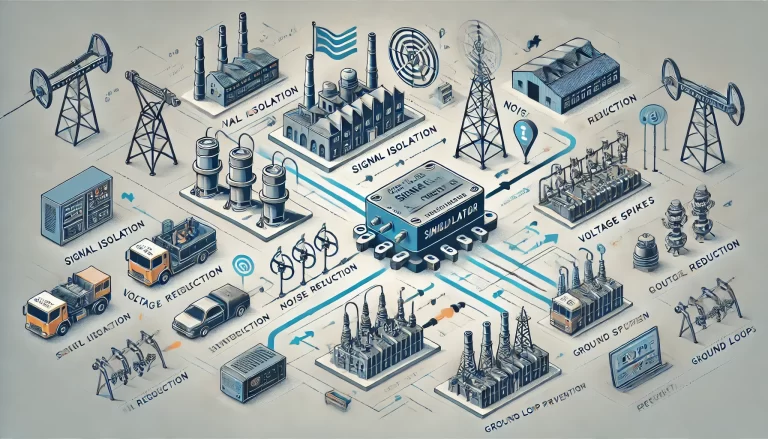Signal isolators play a crucial role in various industrial and electronic applications by ensuring the integrity, accuracy, and safety of signal transmission. They provide numerous benefits that enhance the performance and reliability of measurement and control systems. Below are the primary functions of signal isolators explained in detail:
1. Signal Isolation
Signal isolators effectively separate the input and output signals, preventing any interference, noise, or high voltage anomalies from propagating across the system. This ensures that any disruptions on the input side do not affect the output, thus protecting downstream equipment and maintaining operational integrity.
Key Benefits:
Prevents ground loops that can distort signal accuracy.
Enhances measurement precision by reducing electrical noise.
Protects sensitive equipment from potential damage due to voltage spikes.

2. Enhanced Interference Immunity
Signal isolators reduce the impact of external electromagnetic interference (EMI) and radio frequency interference (RFI) on measurement and control signals. Industrial environments often contain high levels of electrical noise, and isolators help maintain signal stability and reliability.
Applications:
Industrial automation systems
Medical devices with high susceptibility to electromagnetic interference
Power plants where electrical noise is prevalent
3. Signal Matching and Conversion
Signal isolators enable seamless compatibility between different signal types and levels. They can convert signals to appropriate levels and formats, allowing diverse equipment to communicate effectively.
Examples:
Converting analog signals (e.g., 4-20mA to 0-10V)
Interfacing between systems with differing voltage levels
Ensuring compatibility between legacy and modern control systems
4. Improved System Safety
By isolating hazardous high voltage or high current signals, signal isolators safeguard personnel and equipment from electrical hazards. This feature is especially critical in applications involving high-power machinery and electrical grids.
Safety Advantages:
Prevents electrical shock hazards to operators
Reduces the risk of equipment failure due to voltage surges
Complies with industry safety standards
5. Ground Loop Elimination
Signal isolators prevent ground loops, which occur when different parts of a system have varying ground potentials. Ground loops can introduce errors and noise in signal transmission, leading to inaccurate readings and potential system failures.
Key Solutions Provided:
Breaking unwanted electrical paths
Ensuring uniform potential across connected devices
Maintaining accurate signal representation

6. Protection of Control Systems
Unforeseen signal anomalies, such as transient voltage spikes or short circuits, can jeopardize the performance and longevity of control systems. Signal isolators act as a protective barrier, ensuring that the control system remains stable and functional.
Benefits:
Extends the lifespan of sensitive electronic components
Minimizes downtime and maintenance costs
Prevents cascading failures within interconnected systems
7. Facilitating Fault Diagnosis
Signal isolators simplify troubleshooting processes by helping identify whether a fault originates from the input or output side. This accelerates the diagnosis and resolution of system issues, improving overall efficiency.
Use Cases:
Industrial process monitoring
Remote sensor networks
Maintenance of complex automation systems
Additional Considerations
When selecting a signal isolator, it is essential to consider the following factors to ensure optimal performance:
Isolation voltage rating: Ensure it meets the requirements of the operating environment.
Signal bandwidth: Choose based on the frequency response needed.
Power requirements: Evaluate compatibility with existing power supplies.
Environmental factors: Consider temperature, humidity, and vibration resistance.
Conclusion
Signal isolators provide indispensable benefits in industrial and electronic systems, ensuring signal integrity, enhancing system safety, and facilitating effective troubleshooting. Understanding their key functions and selecting the right isolator for specific applications can significantly improve system performance and longevity.
